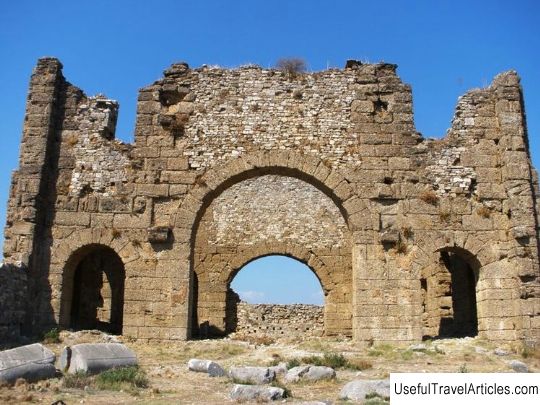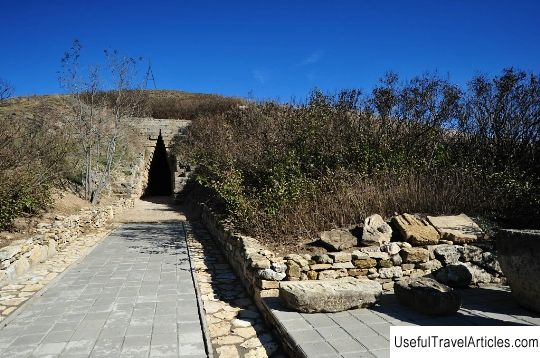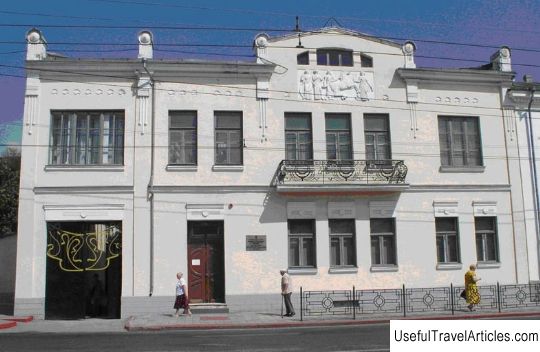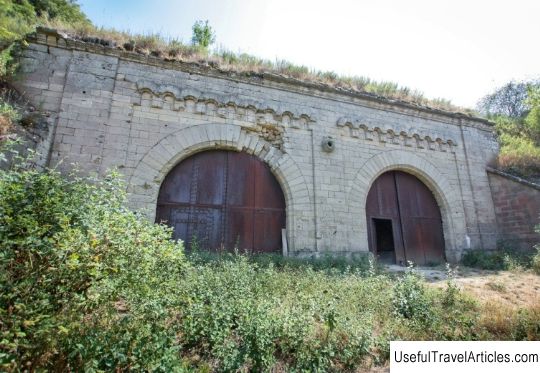Melek-Chesmensky mound description and photo - Crimea: Kerch
Rating: 7,8/10 (400 votes) 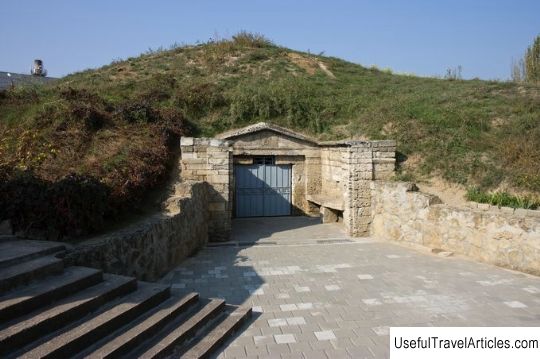
Melek-Chesmensky mound description and photo - Crimea: Kerch. Detailed information about the attraction. Description, photos and a map showing the nearest significant objects. Photo and descriptionMelek-Chesmensky mound, towering in the central part of Kerch, is one of the attractions of the Crimean city. This is a burial structure of the 4th century. BC, and it is very advanced in technical and artistic terms for its time. The mound has a circumference of 200 m and a height of almost 8 m. It got its name from the Tatar name of the Melek-Chesma river, which flows nearby. Melek-Chesmensky mound was excavated in 1858 by A. Lyutsenko, director of the Kerch Museum of Antiquities. Archaeologists hoped that this majestic crypt remained intact, but the tomb turned out to be robbed through a hole made in the vault near the pediment. In the crypt, only a couple of boards from a small coffin, the remains of a child, a twisted bronze bracelet and fragments of alabaster were found. In the burial chamber of the mound, traces of a funeral feast and a bonfire were found. Dishes broken during the funeral rite and fragments of a red-figured lekana made it possible to determine the time of construction of this structure as the second half of the 4th century. BC. The burial structure inside the mound consists of two parts: a chamber with a pyramidal vault and a dromos leading into it from smoothly hewn blocks. Like the crypts of the Tsarskoye and Zolotoy burial mounds, the Melek-Chesme crypt was dryly composed of stone fragments. The tradition of erecting such mounds came to the Bosporus from Asia Minor and mainland Greece. The ancient Egyptian pyramids served as their prototype. Due to the removal of clay from the mound by the surrounding residents, it was practically destroyed. Since 1870 Russian Emperor Alexander II annually allocated money from the state treasury for the repair and protection of the crypt. In July 1871 the mound was opened to visitors. Gradually, it began to fill up with many monuments of Hellenic culture, as a result of which the mound was transformed into a small museum of antiquities. After the arrival of Soviet power, the mound was transferred to the jurisdiction of the Kerch Museum. After the reconstruction carried out in 1994, the mound again became open to tourists.      We also recommend reading Museum of Contemporary History of Russia description and photo - Russia - Moscow: Moscow Topic: Melek-Chesmensky mound description and photo - Crimea: Kerch. |
